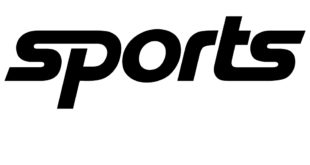By Arnie Leshin

Whether you were rooting for Virginia or Texas Tech, you had to admit it was quite a dandy final to the NCAA Men’s Basketball Tournament.
I’ve sat through many as a spectator and as a sportswriter, and it’s been long years of storing most of them on my memory chart. How long, well I’d say it began with the 1950 college gambling scandal that involved New York City schools. No “Big Apple” then, just the largest city in the USA getting a taste of illegal gambling on games, as in players and betters making big buckson the games.
If the point spread was, let’s say 5 points, the players involved would make sure it stayed that way. Assist the gamblers on the court and count your rewards, but be sure not to wake the town and tell the people.
It was the era of the City College of New York (CCNY), the number one team in the land, and the other power teams were St. John’s, New York University (NYU), Long Island University (LIU) and Manhattan College from the Bronx.
But CCNY suffered the most. It wasn’t everyone on the roster who kept the gamblers happy, but the better players, the All-Americas, the ones who controlled the flow of the game. .And the scandal news broke after the Engineers defeated Bradley in the NCAA final and then in the NIT final.
Those were the times when, if you were good, you would get invited to both tournaments. And in the early 50s, the two best teams nationally were CCNY and Bradley from Indiana.
Names are not important here because reputations were damaged big time. There were other scandals like this that followed, but nothing like the one involving the NYC schools. Bradley, led by Bobby Joe Mason, was cleared and returned to MSG in 1954 to lose to Tom Goal and LaSalle, 93-76.
Living in Brooklyn, N.Y., I was young enough to know just the facts and consequences. My friends who shot hoops in the nearby playground were like me, too young to make a big deal of it.
As I listened on the radio because there were few televisions back than, read the sports pages of the New York Daily News and the Mirror, It began decades and decades of following the bouncing ball, learning the game, and noticing who the better players were.
In 1957, it was the 7-foot-2 Wilt Chamberlain from Philadelphia as the headliner on the Kansas roster, and he was named MVP of the NCAA Tournament despite losing in three overtimes to a North Carolina team sprinkled with standouts from the New York area.
In 1961 and ’62, there was the elite 6-5 Oscar Robertson and Cincinnati winning back-to-back national tiles over Ohio State, the second time in OT. UCLA was yet to be heard from, but its long reign came into play in 1964 after Loyola of Chicago led by NYC players, upset Cincinnati, 61-60, in overtime.
The Bruins of legendary head coach John Wodden then won their first championships in the next two finals, and the long historic reign came about following the talented Texas Western team with five African-Americans, three from the boroughs of New York City, stunning the all-white, undefeated Kentucky team 72-64, before a sell-out crowd at the University of Maryland.
I remember Joe Namath, then in his second season with the New York Jets, standing in the cold outside and bundled up in a fur coat. I was covering the Jets then and Namath told me that his guest ticket wasn’t in the will call window, so I hurried inside, found the Maryland sports information director who reached into his jacket pocket and I brought the ticket it to a shivering Namath. It was a complementary ducat for VIPs and Namath took his courtside seat.
He was always grateful for this and always gave me great interviews.
For the 1968 Super Bowl in Miami against the Baltimore Colts, he and the green and white stayed at the Five Coins Motel across the street from the beach in Fort Lauderdale, and he treated me to lunch, and when he became annoyed with the reporters who pestered him, he just leaned back in his poolside chair and told them his Jets would win, and they did, 16-7, at the Orange Bowl.
So was able to mix in football with basketball while writing this. And I can also add fast-pitch softball, for Joe and I played Tuesday doubleheaders in the Broadway Show League in Central Park, he with the star-studded CBS team and me with United Press International.
Getting back to hoops, UCLA dominated the country from 1967 to 1973. It won every NCAA tournament during that span, and faced a different school in each final. Only once did the Bruins trail at halftime, that coming against the Jacksonville, Florida, school that featured “Batman and Robin”, 7-foot Artis Gilmore and 6-5 guard Bruce Morgan. UCLA won 80-69.
The streak ended after the 87-66 win over Memphis State. But after North Carolina State and 6-4 standout David Thompson turned back Marquette, 76-64, in the ’74 final, back came Wooden’s Bruins to topple Kentucky, 92-85, for the ‘75 championship. . .
Since than, the Bruins made it to three finals and won only one, 89-78, over Arkansas in 1995 for their last title. Before that, they were defeated 59-54, by Louisville in 1980 and then 73-57 to Floridain 2006 in their last appearance in the championship game.
But no one had rosters that Wooden had. It began in 1964 when Walt Hazzard was recruited from Philadelphia and joined by Californian Gail Goodrich for what became the best backcourt the program ever had.
In 1967, Wooden flew coast to coast to spent time in New York and to recruit Lew Alcindor, the best schoolboy player in the country. The 7-foot standout from Power Memorial in Manhattanwanted to stay close to home and preferred St. John’s, but his farther was convinced it was best to head west and play for Wooden.
Big Lew, who lost only twice at Power Memorial, was ineligible to play on the UCLA varsity as a freshman, but with the freshman team, he stood old as the best player on the court and helped defeatthe varsity twice before big turnouts. He was than named to the All-America team three straight times, the most ever by a college player, and each season he powered the way to championship land.
Next came the arrival of 6-8 strong forward Sidney Wicks, followed by 6-11 Bill Walton, and Wicks was All-America in 1970 and Walton was named in 1972 and ’73. In 1973, the Bruins’ 6-7 Richard Washington also was chosen All-America.
The list goes on. There were also Edgar Lacey, Lucius Allen, Curtis Rowe, Mike Warren, Marques Johnson, John Vallery, Steve Patterson, Ki Ki Vamderweigh, Rod Foster, and the Hall of Fame coach who won 10 national championships. John Wooden, the mistro who orchestrated the program.
In 1983, it was the time when Jim Valvano ran around the court looking for someone to hug after his North Carolina State team upset its way to the final played at the University of New Mexico Pit and stunned heavy favorite Houston.
Just to let you know that the Wolf Pack had lost eight of their first dozen starts and looked like it was going to be a dismal season. But somehow Valvano found a way to win. He was a great motivator and believed he had a roster that was championship caliber, although it also brought more unbelievers than believers.
But he and his players had the last laugh. Having lost twice to 7-4 Ralph Sampson and Virginia, NCSU worked its way up from a low seed in the ACC tournament, getting past the likes of North Carolina, Wake Forest, Duke and then shocking big Ralph and the Cavaliers in the title game.
Then came the national tournament and Valvano never slowed down. Again he turned back Virginia and the state rival Tar Heels. It was a stellar backcourt of Sidney Lowe and Derrick Wittenburg mixing in with 6-11Thurl Bailey and listening to Valvano’s will to win in practices, in classes, and around the campus, students and administrators and area residents jumped on the merry go round.
When the Wolf Pack roared their way to the title game, the consensus gave notice that this magic ride would not survive the tall and talented Cougars, the No. 1 team in the land at 33-2, but once the game began, Volvano never stopped coaching, he loosened his tie, some times leaned back in his chair for a short time, and always telling his team to keep hanging in there, as well as often turning to the NCSU section and raising his arms to keep them believing.
Down it went to the final minutes. Houston fans couldn’t believe how their talented team could actually be tested by Jimmy V’s underdogs, and Volvano’s final time out came with onc minute left and his team in a 52-52 deadlock and with the ball.
NC State made a few short passes until Lowe got away a toss to Wittenburg back of the free throw line, and if it was just a shot that fell short, Bailey grabbed the ball, stuffed it in the basket and that was all that mattered as the final buzzer sounded and Jimmy V ran around like he had lost something, but it was the other way around.
On April 28, 1993, he passed away at 47 after a battle with Adenocarcinoma, a type of many gradual cancers. Two months before, helped by his friend Dick Vitale, he took the stage at the ESPN AWARDS, and from the podium made an inspirational and memorable speech that said”.
“There are three things we should do every day.”
“No.1 is laugh, you should laugh every day.”
“No. 2 is think, you should spend more time in thought.”
“No. 3 is you should have your emotions moved to tears, whether it be happiness or joy.”
. . . “But if you laugh, if you think, and you cry, that’s a full day, that’s a heck of a day, You do that seven times a week, you’re going to have something special,”.
“And don’t give up, don’t ever give up.” — JIM VALVANO
Three years after the Wolf Pack-Cougar classic, it was Indiana-Syracuse at the Superdome in New Orleans and 6-7 Orange forward Derrick Coleman on the foul line with the clock showing 7:6 seconds, his team up 73-72, and being awarded two attempts after being fouled on a missed tap-in.
But the first one rimmed the left side of the basket and the next one the right side, and by the time Coleman tried to get a time out, Hoosier All-America guard Steve Alford was racing down the sidelines with the ball, found Keith Smart in the corner, and Smart’s shot found the mark and the title via the 74-73 outcome in the final seconds.
Two years later, Big East rivals Georgetown and Villanova met for the fourth time after the top-ranked Hoyas won the first three. It was as usual a physical game, but this time Nova wanted the national title, and it was the Nova quartet of MVP Ed Pinkney, Dwayne McCain, Harold Jensen and Gary McLean that earned a 66-64 win and finally beat Georgetown.
There are no doubt other championship finals that I could add, but I made sure not to leave out the ones that stood at the top of my list, the ones I remember the most, and so that’s all folks.
 SantaFeToday.com Santa Fe’s Hometown News
SantaFeToday.com Santa Fe’s Hometown News

